May 26-June 6, 2008
Summary: Many volunteers depart as their time runs up, leaving us with few hands. The paperwork piles remain high, ranging from visas to Bioregionalism Education. Jaime keeps things in the field under control.
On Monday the Planet Drum volunteers took a tour of Rio Muchacho Farm to get to see dry tropical forest permaculture in action. I on the other hand made another trip to Guayaquil for my visa. Finally I got all of my documents submitted and now will wait a few days for processing.
Fuki stayed in Rio Muchacho to learn more about permaculture and volunteer on the farm. Cameron returned to the USA. Thanks for all of your help, and to Mike who left last week. You will be missed!
Tuesday, Sam and Jaime watered at Tamarindos Reales, but the water hasn’t been running in the neighborhood and the nearby water tank was dry, so they walked to La Cruz and watered there instead. They then went to the greenhouse and transplanted Guachepeli seedlings. I returned from Guayaquil.
On Wednesday the Astillero site was watered and more Palo Santo seeds were collected. In the afternoon it drizzled. The drizzle continued to the next day.
Thursday we started the day by collecting some bottles around the La Cruz hill. Then the help of our friend Ricardito was summoned to drive us to collect more bottles at the Bahia dump at Kilometro 8.
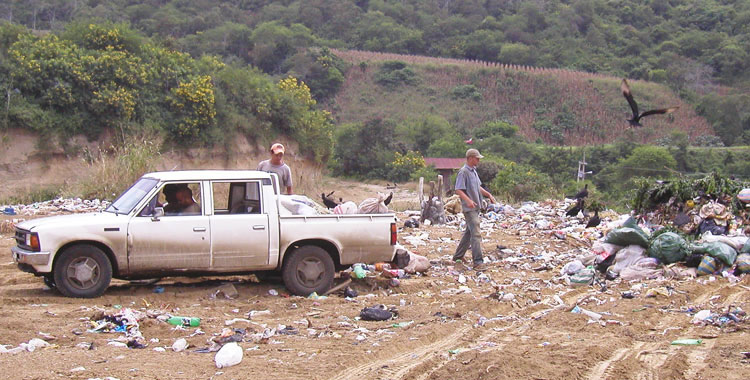
Sam startles a vulture while collecting bottles at the dump.
We took advantage of the trip to dispose of some large scraps of garbage from the house.
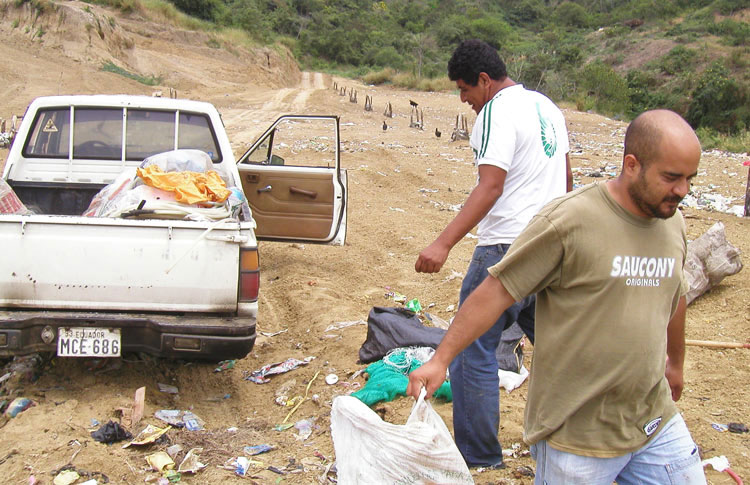
Then we proceeded to fill the back of Ricardito’s truck to the brim with 3-liter bottles and delivered them to the greenhouse.
Friday we spent the morning cutting and cleaning the bottles. There was enough time to prepare a batch of dirt and fill a few of the bottles as well.
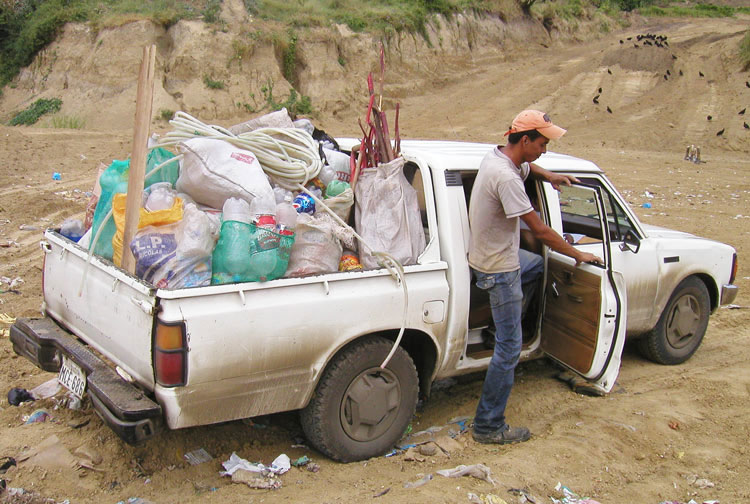
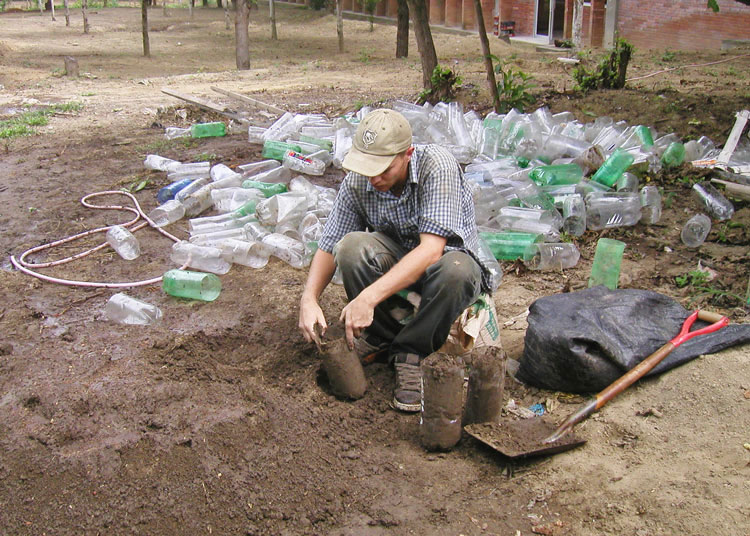
Sam departed Monday morning to return to Quito and the house was officially empty of volunteers. I took advantage of the lull in volunteer help to catch up on office work and house maintenance. Jaime kept things going in the greenhouse and field.
Monday I handled some of my visa business over the phone, prepared the monthly budget, and answered emails. Jaime collected leaves of Tierramonte, a kind of shrub that produces very nutrient rich leaves which are good for fertilizer. He combined the Tierramonte leaves with rice hulls and decomposed droppings from Cornish hens. Sacks of the prepared booster soil will be deposited later on the trees we planted this year. Since the mixture will also serve to maintain soil humidity, due to the rice hulls and leaves, it will be placed on the most sun-exposed trees first.
On Tuesday Jaime put the Tierramonte, rice hull, and compost mixture (‘booster soil’ from now on) on trees in El Astillero and Reales Tamarindos sites. I spent the morning editing materials for the Bioregionalismo class this week on the subject of ‘Land Ecosystems.’
Jaime collected more booster soil on Wednesday. I finished my editing and then tackled some house clean up.
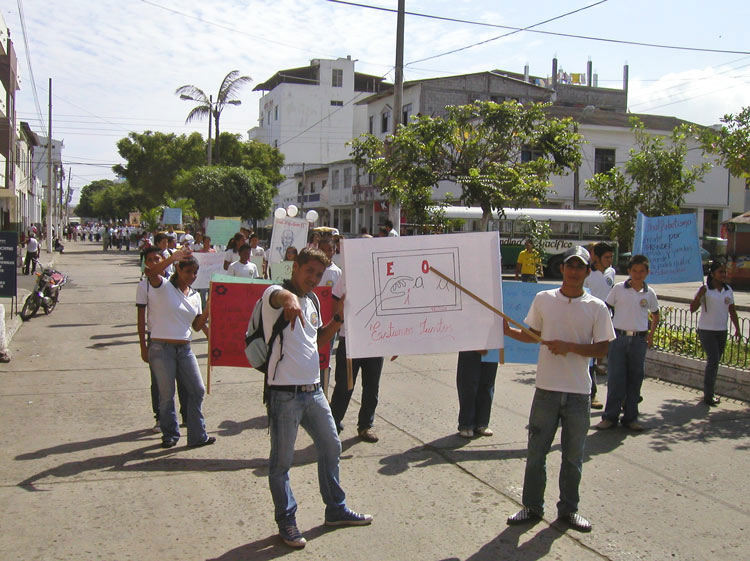
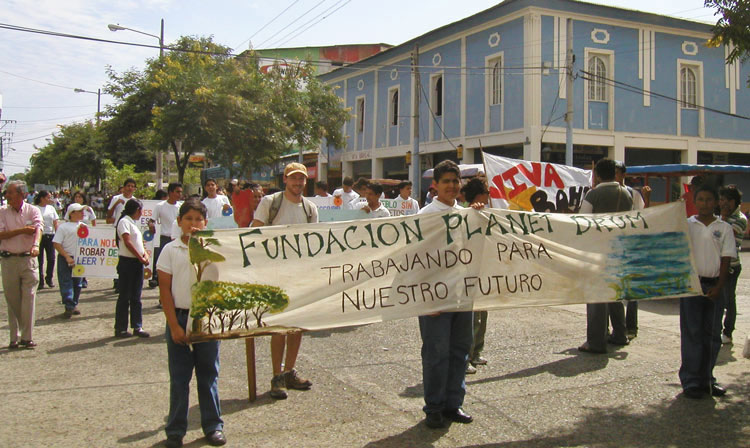
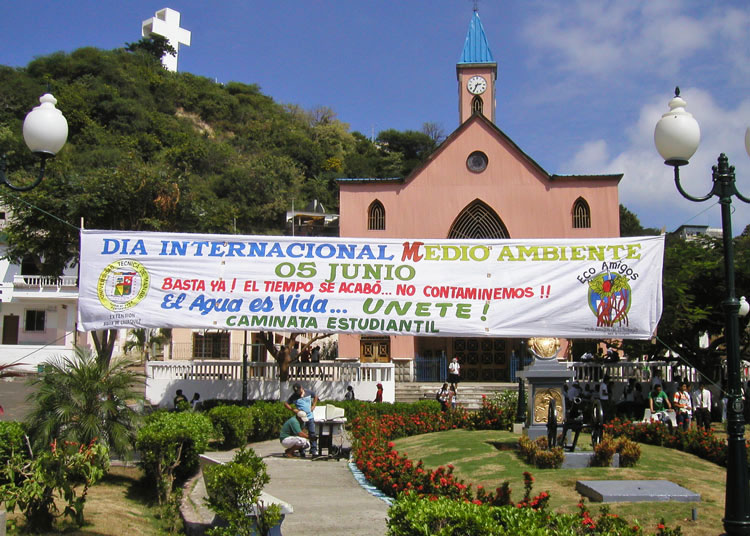
Thursday morning we gave the trees at the La Cruz revegetation site doses of booster soil. Afterwards we joined a citywide parade in celebration of International Day of the Environment.
Teams of school kids marched down the main street of town waving signs and banners in support of the environment.
Whether they were merely enjoying an excuse to not be inside classrooms or not, it was an impressive turn out and the well-delivered speeches afterwards illustrated that there are some signs of life left in the eco-city movement.
On Friday I translate some of Ramon’s Bioregional Education class reports and met with some folks from the Planning Department of the Municipio about the Planet Drum land access road.
Pásalo bien.
Clay
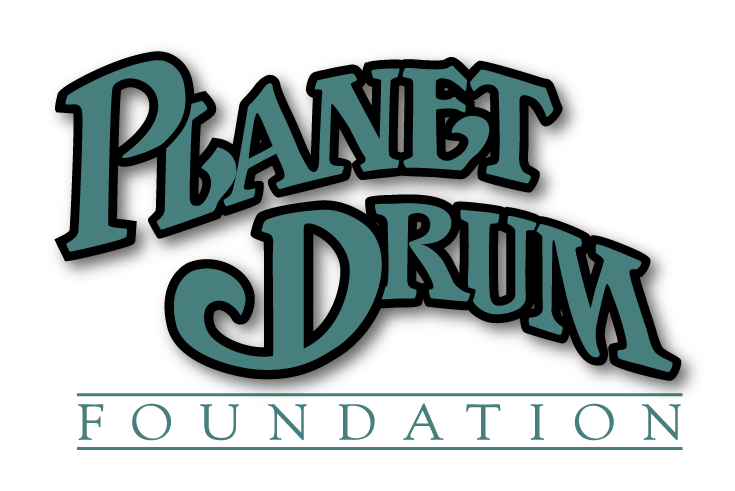
Can you be more specific about the content of your article? After reading it, I still have some doubts. Hope you can help me.
Thank you for your sharing. I am worried that I lack creative ideas. It is your article that makes me full of hope. Thank you. But, I have a question, can you help me? https://www.binance.info/en-IN/register?ref=UM6SMJM3
I don’t think the title of your article matches the content lol. Just kidding, mainly because I had some doubts after reading the article. 注册
Thank you for your sharing. I am worried that I lack creative ideas. It is your article that makes me full of hope. Thank you. But, I have a question, can you help me?